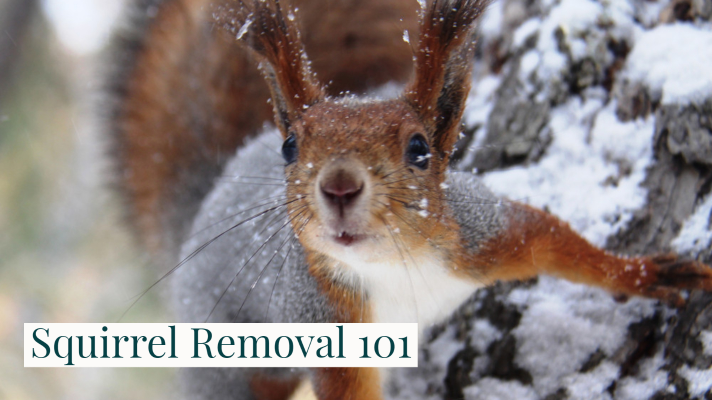

Updated 2/11/21
Of all the things you thought you’d have to deal with as a homeowner, squirrel removal probably wasn’t high on the list. But when those critters get into your attic, it can cause major problems for your house. If you want to deter squirrels from the house, you might need to go deeper into the process than knowing the best way to rid squirrels from the attic. If they have a way back inside, they will return and it’ll be an ongoing issue for you. Your best bet is to find the best company for squirrel removal in your area. They will be able to get the squirrels out humanely, but permanently. A company can use the best way to trap squirrels in the attic and get them out of your house, then help you make sure that they never return. So while it is possible to do it yourself, you’re likely to run into further problems down the line if you do so. You’re better off finding a squirrel removal service and they will help you solve the problem.
You go through a lot to ensure that your home is pest-free: you watch closely for signs of gophers in the yard, you quickly nip wasp nests in the bud, and you hire an exterminator to fog for mosquitos several times a year. However, there is an unexpected creature that often becomes an unwanted guest in your home: squirrels. More specifically, squirrels in the attic. Squirrels are not commonly viewed as pests, due to their relatively harmless appearance and lack of association in the mind with true pests like termites and mice. Regardless, having squirrels in the attic is a nuisance for homeowners, and is a sign that it is time for the help of an animal and rodent removal company.
Chase the squirrels out.
If you are now in the market for squirrel removal, the most important thing to remember is that chasing them out of your attic will do nothing if they have the means to get back in. For this reason, your first step is to seal off your attic. Inspect the area for holes and spaces, and schedule the appropriate repairs. Invest in a chimney cap or mesh fencing to bar the unwanted rodents from chimney entry. The same applies to any vents with gaps large enough to welcome a squirrel through. Double-check that there are no entry points for the rodents from the attic into your home; once you begin the squirrel evacuation process, they may choose to exit the attic further into your home instead of into the outdoors.
To flush out the pests, you should leave one hole or space in the attic as an exit point. Be sure to patch up this space after the problem is solved. Your local animal and rodent removal company can help patch the hole properly.
Use squirrel traps.
If you would rather seal up the attic entirely and then remove the squirrels, you can do so by trapping them. You can use any design of a small, live cage trap to gather up the squirrels in the attic. The ideal size of a cage to trap a squirrel is eighteen inches long, six inches high, and six inches wide. You can find traps like this at most hardware stores. The creatures are not likely to approach the trap if it is sitting out in the open or middle of the attic, so make sure you stash it in a hidden, corner space.
Squirrel traps can be baited with any appealing food from peanuts to apple slices to soda crackers. Ensure that the food is situated far enough inside the cage that the squirrel can’t grab it from the outside.
After you have trapped squirrels, it is time for you to relocate them far away enough from your home so that they are not encouraged to come back, usually a distance of five to ten miles.
If you have caught any squirrels that you suspect are babies or a mother, check with your local animal and rodent removal company to seek professional help on trapping and releasing all of the creatures as one unit. If you release babies without their mothers, they will be helpless.
Even if you suspect you have trapped the last of the squirrels, leave the traps set and baited until you go one whole week without a catch.
Repel the rodents as a preventative measure.
Radios that constantly play human voices or ultrasonic repellants can be used to discourage squirrels from re-entering your attic, even if there are entry points available. The ultrasonic repellents produce high-decibel noises that are agitating to small animals. A couple of downsides to the ultrasonic repellant method are that squirrels are known to eventually adapt to the noise and invade your attic anyway, and the noises may bother other pets in your home.
Strobe lights, commercial chemical repellants, and mothballs may also be effective in repelling squirrels from your home. Some methods are more effective than others, so try each one until you find the one most suitable for you. Check with your local animal and rodent removal company for the best methods.






